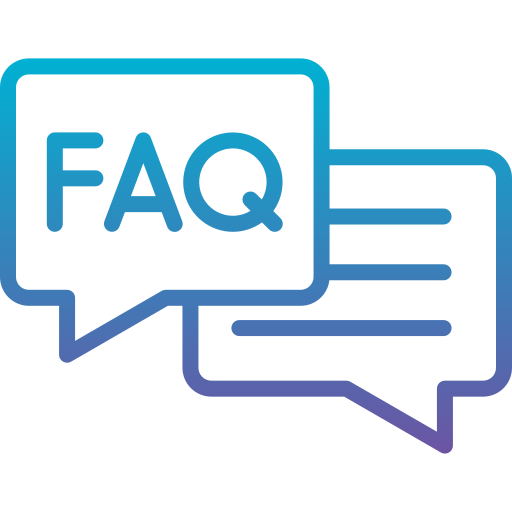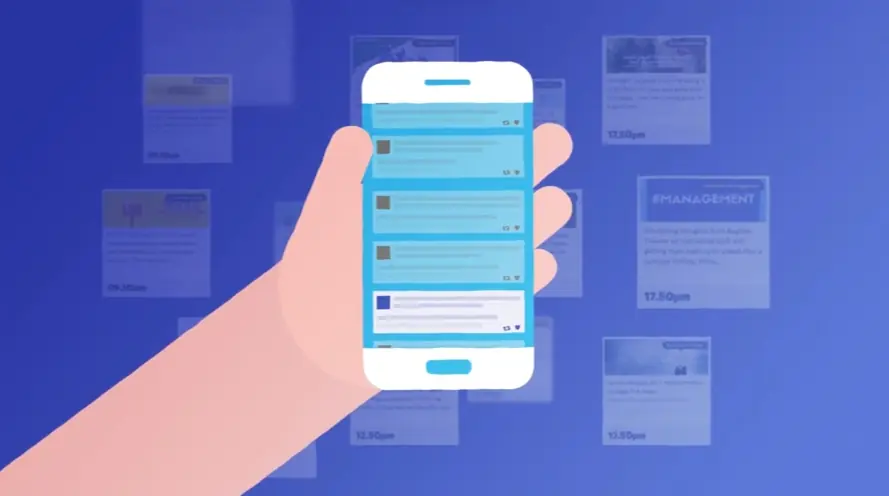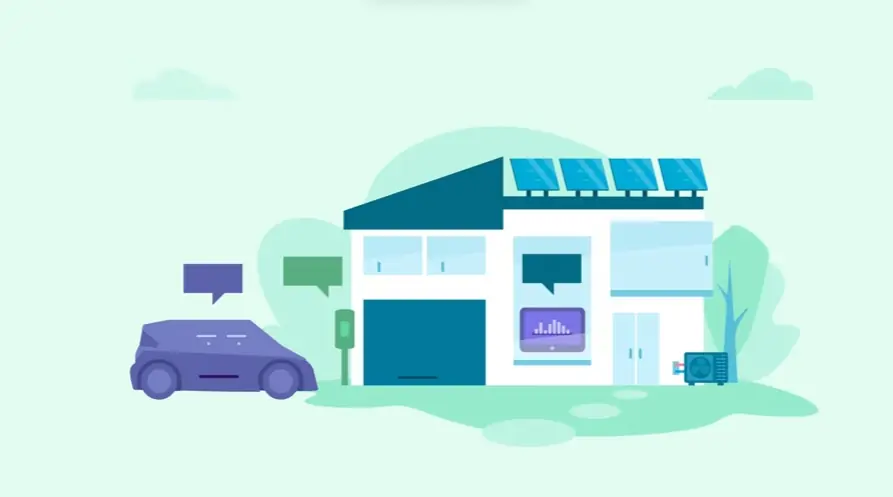Remember Needing To Grasp Ideas Quickly? I've Been There, Scrolling, Searching For That Moment Of Instant Understanding When Encountering Something New And Potentially Transformative For My Workflow Or Business. It's That Visual 'aha!' That Truly Makes A Difference, Cutting Through Complexity To Reveal Genuine Value.
That Direct, Impactful Connection Is The Power We Explore When We Dive Into Effective Product Communication. Seeing How Others Have Successfully Achieved This Clarity For Their Audience Is Invaluable, And These 30 Great **linkedin Video Campaign Examples** Showcase Exactly That Kind Of Premium Insight And Potential Business Outcome.
It’s crucial to plan ahead when it comes to high-quality video production. Discuss with our team, how you can get visual style, budget, timeline in sync.
Jai Ghosh
Video Producer at Advids
Let's talk

How important are captions for LinkedIn videos?
Captions are crucial for LinkedIn videos as most are watched without sound, especially on mobile. They ensure accessibility for deaf/hard-of-hearing viewers, improve comprehension and retention, and potentially boost watch time by keeping viewers engaged even in sound-off environments, making your message understood by a wider audience.
What is the ideal length for LinkedIn videos to maximize engagement?
While LinkedIn allows videos up to 10 minutes, optimal engagement typically favors shorter durations, ideally 15-30 seconds for initial attention. For B2B or thought leadership content, 2-5 minutes can work if highly valuable. Focus on a strong hook and delivering value quickly, as engagement often drops after the first minute; content quality is key.
How can I optimize my LinkedIn videos for mobile viewing?
To optimize for mobile, use square (1:1) or vertical (9:16) formats that fill the screen better. Ensure text overlays and visuals are clear and large enough for small screens. Accurate, easily readable captions are essential. Start with a strong hook to immediately grab attention in the mobile feed and optimize file size for faster loading.
How can I use LinkedIn video to build thought leadership?
Use LinkedIn video to share insights on industry trends, offer analysis, or present expert Q&A to build thought leadership. Share genuine opinions and valuable knowledge consistently. Formats like interviews or presentations work well. Encourage discussion by asking questions to foster engagement around your expertise and build credibility over time.
How do LinkedIn video hooks influence viewership?
LinkedIn video hooks are vital because viewers decide within the first 3-5 seconds whether to continue watching while scrolling. An effective hook grabs attention immediately, provides a reason to watch, and reduces bounce rate. Techniques include asking questions, stating stats, or showing compelling visuals, setting a positive expectation for the content.
How does B2B video marketing work effectively on LinkedIn?
B2B video works on LinkedIn by targeting professionals with relevant content like explainers or testimonials that address business needs. It builds trust and humanizes the brand for decision-makers. Video can be used throughout the sales funnel for lead generation and nurturing, effectively communicating complex solutions and fostering relationships.
What are the best practices for creating engaging LinkedIn video content?
Best practices for engaging LinkedIn video include delivering value quickly with clear purpose. Ensure good visual and audio quality. Use storytelling to structure content and include a clear call to action. Utilize native uploads, add text overlays, and always include captions to maximize accessibility and viewer retention on the platform.
What types of short-form videos perform well on LinkedIn?
Short-form videos performing well on LinkedIn include quick tips or tutorials offering actionable advice. Behind-the-scenes glimpses build authenticity. Snippets from longer interviews or presentations highlighting key points are effective. Fast-fact Q&A formats or short personal insights also engage viewers quickly within the feed.
How can I analyze LinkedIn video analytics to improve strategy?
Analyze LinkedIn video analytics like views, completion rate, average watch time, and engagement metrics to gauge performance. Low watch time signals issues with pacing or hooks. High engagement indicates resonant topics. Review audience demographics to confirm you're reaching your target. Use these insights for A/B testing and strategy refinement.
How can I use LinkedIn video ads effectively?
Use LinkedIn video ads effectively by leveraging precise B2B targeting options. Define a clear goal (e.g., lead gen) and include a prominent call-to-action button. Keep ads short (15-30 seconds) and design them to feel like native content. Continuously test different creatives and targeting parameters using analytics to optimize spend and campaign ROI.
Best video length for LinkedIn campaigns
Crafting impactful linkedin video campaign requires strategic depth ensuring viewer actions align campaign objectives . Effectiveness demands more than just short runtime; content must resonate and drive desired responses. Viewers must easily grasp desired next step s . Calls to action prompt specific responses moving prospects forwards through funnel. Ensure calls match video goals viewer journey stage guiding viewers appropriately.
Measuring impact transcends view counts; focus tangible value creation. Assess production costs against generated leads, shortened sales cycles, decreased support requests for LinkedIn B2B video efforts. These metrics provide clearer picture return investment. Using real world examples product demonstrations increases relatability belief showing tool action typical scenarios. Showcase seamless integration how product fits existing workflows enhances perceived value potential users.
Understanding viewer engagement crucial refining content improving performance. Analyze behavior data revealing which video parts resonate or cause drop off points viewer interest wanes. Incorporating social proof builds trust credibility quickly showing trusted companies use product or highlighting success statistics social validation. Platform specific optimization considers viewer intent environment tailoring length sound needs maximizing impact across different contexts.
- Leveraging viewer behavior data through heatmaps attention tracking pinpoints confusing segments areas needing improvement guiding future content creation.
- A/B testing various elements like thumbnail images video openings yields significant performance insights understanding audience preferences.
- Testing calls action wording placement script variations refines conversion rates maximizing conversions video views.
Successful video efforts involve continuous analysis optimization beyond initial creation ensuring maximum business impact.
Effective video calls to action on LinkedIn
Effective calls to action stand as pivotal elements within successful video initiatives. While understanding return on investment extends beyond simple views to encompass valuable metrics like click through and lead form submissions, crafting compelling calls ensures viewers take that desired next step. Moving past vague requests proves essential; instead of general prompts, employing action oriented language directly relevant to the viewer journey amplifies engagement. This strategic approach makes a linkedin business video a powerful engine for driving tangible outcomes tied directly to lead generation and revenue tracking, building clearly on the ROI focus.
Demonstrating product value through real world scenarios significantly enhances a video's persuasive power. Showing viewers how a solution seamlessly integrates into existing workflows or tackles specific industry challenges makes the offering relatable and boosts perceived value. Incorporating social proof, perhaps subtle flashes of well known client logos or user statistics, quickly builds credibility and trust. This trust supports both direct action calls and contributes positively to a broader linkedin brand video strategy by reinforcing reputation and authority.
Analyzing viewer behavior provides invaluable insights into content performance. Utilizing tools that reveal exactly which parts of a video hold attention, or where interest drops, allows for data driven refinement. This granular understanding ensures future video content resonates deeply and effectively guides viewers towards the desired call to action, optimizing the journey from passive viewer to engaged prospect.
- Test different calls to action start your free trial request demo download report learn how to save time.
- A/B test elements like thumbnail images opening hooks or placement of the call to action itself.
- Optimize content and calls for viewer context videos in feeds need immediate hooks perhaps understandable without sound.
- Use viewer attention data to refine video scripts ensuring key information leading to the call is compelling.
Combining clear, specific calls with strategic content and continuous optimization transforms video into a potent tool for achieving measurable objectives on LinkedIn.
Using organic versus paid LinkedIn video
Organic video on LinkedIn helps cultivate a community, sharing expertise and fostering dialogue within professional networks. Paid video, conversely, amplifies targeted reach and precisely targets specific professional segments for distinct campaign objectives. Both organic and paid video approaches demand strategic clarity to resonate effectively with intended audiences and achieve desired outcomes.
Defining clear campaign objectives is paramount for either strategy. Success profoundly depends on guiding viewers toward desired actions, moving beyond vague prompts to clear, actionable steps tailored to their professional journey stage. Whether showcasing a service or demonstrating a complex process with a linkedin explainer animation, specific calls matter. Consider action-oriented text like requesting a demo or downloading a relevant report.
Demonstrating tangible value through real-world product scenarios greatly enhances viewer understanding and perceived utility. Showing product integration into existing workflows or how it solves specific industry problems increases its appeal. Analyzing how audiences interact with content provides invaluable insights for refinement. Incorporating social proof elements quickly builds credibility with logos or user statistics.
- Specific calls to action drive conversions; teams should employ directives like starting free trials or downloading resources relevant to the video content and audience targeting.
- Measuring return on investment requires tracking production costs against tangible business impacts. This involves assessing outcomes such as generating qualified leads , shortening the sales cycle length due to better-informed prospects, or potentially reducing support volume by better educating users with a LinkedIn explainer video explaining features.
- Leveraging viewer analytics tools, including heatmaps or attention tracking, identifies compelling or confusing video segments. This granular data informs iterative improvements through A/B testing various creative elements like thumbnail images, the initial seconds of content, CTA placement or wording, or even slightly different script variations.
- Content optimization means adapting video length and style for different viewing environments and viewer intent. Social feeds require content that grabs attention instantly, potentially understandable without sound using text overlays and kept shorter. Videos embedded on a product page, conversely, assume higher viewer intent and can afford to be slightly longer and more detailed.
Ultimately, a thoughtful strategy, informed by audience behavior and clear objectives, maximizes the impact of video campaigns on LinkedIn, whether distributed organically or through paid channels.
Optimizing LinkedIn video for mobile viewing
Optimizing video for mobile viewing requires thoughtful execution ensuring content resonates quickly delivers tangible results. Professionals often consume content smartphones, making adapting approach beyond desktop norms essential. Tailoring elements smaller screens on-the-go attention spans enhances impact significantly, maximizing engagement potential reaching audience where they spend most time scrolling feeds.
Viewer behavior analysis provides crucial insights. Tools offering heatmaps attention tracking reveal precisely which video segments hold interest or cause drop-offs. This granular data empowers creators refine content, identifying confusing points areas where narrative might lag. Adjustments based this feedback directly contribute retaining mobile viewers longer improving content effectiveness overall.
Specific calls to action drive desired outcomes effectively. Generic prompts yield fewer results; action-oriented text like "Request Demo," "Start Your Free Trial," "Download Report" tied directly video objective perform considerably better. Clear next steps reduce friction encouraging immediate conversion right from mobile feed, guiding viewers toward meaningful interaction brand. Applying these optimization techniques across entire efforts ensures each linkedin marketing video contributes effectively reaching target audience maximizing platform potential.
Measuring campaign return involves tracking production costs versus value generated. Value extends beyond simple views, encompassing qualified leads, reduced sales cycles due better-informed prospects, decreased support requests users understood features video. Using real-world scenarios demonstrating product features relevant contexts makes offerings relatable believable, fostering trust audience. Incorporating social proof, brief flashes well-known company logos statistics satisfied users , quickly builds credibility. For those creating a linkedin pitch video, ensuring core value proposition lands quickly crucial, especially with professionals evaluating potential solutions on mobile. A/B testing various elements—thumbnail, opening seconds, CTA wording placement, slight script variations—yields significant insights into what resonates drives higher conversions mobile environment.
- Define desired viewer action post-video specific, measurable terms for clear goal tracking.
- Quantify success using metrics tied business goals, including lead generation conversion rates proving tangible return.
- Show product or service use realistic scenarios demonstrating clear value proposition relevant target industries making connection immediate.
- Continuously test refine video components based performance data analyzing what truly connects mobile audience drives action.
Prioritizing mobile optimization ensures valuable video content captures retains audience attention efficiently on LinkedIn, leading improved engagement better campaign ROI ultimately driving business growth.
Crafting effective LinkedIn video thumbnails
Thumbnails serve as the crucial first visual handshake , dictating whether professionals click. They function as miniature billboards in the feed, needing to instantly convey relevance and intrigue. Compelling imagery , perhaps featuring a key speaker or a relevant product shot, often outperform generic graphics. Any text overlaid should be minimal and easily readable at small sizes, reinforcing core message without clutter. Consistency with overall brand visuals helps build recognition as users scroll, making that critical first impression count.
Beyond initial engagement, success hinges on the nature of your calls to action. Moving past vague instructions requires explicit directives aligned with where potential customer sits in journey. Instead of simple prompt learn more, clearer directives like requesting demonstration or downloading relevant report motivate engagement that can be tracked effectively. Measuring return involves assessing video costs against tangible gains such as acquiring more qualified prospects or shortening sales cycle through informed buyers understanding value presented.
Analyzing how viewers interact provides depth beyond simple view counts. Tools akin to heatmaps show which segments of a LinkedIn product video hold attention or cause drop-offs. This data informs future content strategy refining message delivery. Incorporating social proof, like brief mentions satisfied clients or usage statistics, enhances trust quickly building credibility. Furthermore, running A/B testing on various elements—from thumbnail image to call to action wording or placement—yields invaluable insights into what truly connects with professionals on this platform. Optimizing also means considering viewing context; a LinkedIn short video in feed demands instant impact unlike more detailed piece intended for specific landing page.
- Action-oriented calls prompt specific next steps.
- Real-world scenarios make features relatable.
- Analyzing viewer behavior uncovers engagement patterns.
- A/B testing refines campaign effectiveness.
Tailoring content format ensures it resonates where seen.
Crafting B2B video campaigns for LinkedIn
Crafting B2B video on LinkedIn requires strategic intent. Moving beyond simple presence seeks measurable results. They align content with specific campaign goals, ensuring every video serves distinct purpose within the buyer journey.
Clear specific calls action prove vital. Using action-oriented text like "Request Demo" surpasses generic prompts such as "Learn More." Measuring ROI tracks video costs versus value generated, quantifying results like qualified leads acquired or shortening sales cycles for better-informed prospects. Success also reflects in reduced support inquiries from users understanding features through video.
Demonstrating value relies on showing product use in real-world contexts. Integrating into existing workflows resonates deeply with professional audiences. Building credibility incorporates social proof, like showcasing recognizable client logos or relevant user statistics, fostering immediate trust.
- Analyze viewer behavior using advanced tools. Heatmaps pinpoint where interest drops, informing content refinement based granular data revealing confusing segments.
- Rigorous A/B testing proves essential for optimization. Experiment with thumbnails, opening hooks, CTA wording, even script variations identifying elements driving higher engagement and conversions.
- Optimize specifically LinkedIn's platform environment. Design for sound-off viewing utilizing text overlays, exploring formats like linkedin vertical video capturing mobile audience attention efficiently.
- Directly build trust showcasing success stories. Creating linkedin testimonial video leverages authentic customer experiences resonating prospects powerfully building connection.
Focus strategic execution, continuous refinement drives impactful LinkedIn video campaigns achieving tangible business outcomes.
Structuring compelling LinkedIn campaign videos
Structuring impactful campaign videos demands strategic execution from start to finish. A powerful call to action provides the necessary conclusion, guiding viewers toward taking a specific step. Avoid generic prompts like "Learn More"; instead, action-oriented text proves more compelling. Tailoring this directive ensures it aligns with the viewer's journey and the video's objective. An animated explainer video effectively sets the stage for understanding complex offerings before the call to action.
Measuring video success requires tracking costs against generated value. This value appears as increased qualified leads or potentially shorter sales cycles from better-informed prospects. Analyzing viewer behavior offers granular insights. Tools revealing heatmaps and attention patterns show exactly which video parts resonate, identifying segments viewers watch, rewatch, or skip. This data pinpoints areas needing refinement.
Content gains significant power through context. Demonstrating product features within relatable, real-world scenarios makes a product tour more convincing. Showing integration into common workflows enhances perceived value. Incorporating social proof, like brief mentions of satisfied users or recognizable client logos, quickly builds credibility. To continually improve results, systematically conduct A/B tests on different video elements. Optimizing a LinkedIn video ad means testing initial hooks or call to action variations.
- Craft calls to action specifying the exact desired next step.
- Measure video impact comparing investment against tangible value generated.
- Use viewer analytics to understand engagement patterns and refine content.
- Conduct systematic A/B tests on video elements to optimize performance.
Refining these elements through continuous analysis and testing elevates campaign effectiveness.
Storytelling approaches for LinkedIn video
Crafting compelling narratives for LinkedIn videos demands thoughtful execution. They move beyond simply presenting information, aiming to connect with viewers on a deeper level. Effective storytelling builds anticipation, fosters authenticity, and helps audiences envision themselves benefiting from the solutions offered. This approach is vital because engagement metrics often soar when content feels personal and relevant, encouraging viewers to invest their time and attention.
To maximize impact, clear and specific calls to action are vital at the conclusion of a video. Instead of vague requests, action-oriented text aligned with the video's objective and the viewer's potential next step proves far more effective. Measuring the real ROI of a campaign involves looking past surface-level views to track costs against tangible value generated, such as increased qualified leads or reductions in support inquiries. This demonstrates the video's contribution to bottom-line results.
Incorporating real-world scenarios and showing products within relevant contexts makes demonstrations relatable and believable. Highlighting how a solution integrates into existing workflows or tackles specific industry challenges increases its perceived value significantly. Storytelling can take many forms; sharing tangible success stories through a case study video can powerfully illustrate how solutions translate to real-world wins for clients. Building trust also comes from within; featuring individuals in an employee spotlight video reveals the passionate people behind the solutions, fostering genuine connection.
- Analyzing viewer behavior through heatmaps and attention tracking tools reveals exactly which parts of a video resonate, providing granular data for optimization.
- Incorporating social proof, like mentioning statistics about satisfied users or flashing well-known company logos, quickly builds credibility and trust.
- Beyond initial testing, refining elements like CTA wording, placement, or even subtle script variations can uncover deeper audience preferences and drive conversions.
- Optimizing video content means considering viewer intent and the platform environment; social feeds require instant hooks and potentially sound-off understanding, while product pages allow for deeper dives.
These strategies, focused on authentic connection and measurable outcomes, elevate LinkedIn video from passive viewing to active engagement.
Positioning thought leadership with LinkedIn video
Leveraging LinkedIn video for thought leadership requires a strategic approach focused on demonstrating expertise and guiding audience action. Beyond simply sharing insights, practitioners must consider how their videos drive tangible results and deepen audience understanding. This involves carefully planning the viewer journey and measuring impact effectively. They need to connect their valuable perspectives to practical outcomes, showing how their knowledge translates into real-world solutions for their audience.
Integrating clear and specific calls to action is crucial at the conclusion of a video. Rather than vague prompts, use action-oriented text like "Start Your Free Trial" or "Download the Report," aligning directly with the video's objective and the viewer's potential next step. Measuring a campaign's return involves tracking costs versus value generated, such as increased qualified leads or reduced sales cycle length due to better-informed prospects. Demonstrating solutions effectively, perhaps through an explainer video, helps position organizations as experts.
Using real-world scenarios and demonstrating features within relevant contexts makes a product tour more relatable. Showing how an offering integrates into existing workflows or solves problems specific to an industry increases its perceived value. Analyzing viewer behavior through tools like heatmaps can reveal exactly which parts viewers watch or skip, invaluable for identifying confusing segments or points where interest drops. Incorporating social proof visually, such as brief flashes of well-known client logos or mentioning statistics about satisfied users, builds credibility quickly. A problem/solution video can effectively showcase resolving audience challenges.
- Testing different video elements such as the thumbnail image or the first ten seconds yields insights into audience resonance.
- A/B testing placement or wording of the call to action drives higher conversions.
- Optimizing for various platforms considers viewer intent and environment; videos for feeds need instant hooks and potentially text overlays.
- Videos embedded on product pages can be slightly longer and more detailed, assuming higher viewer intent.
Maintaining a professional tone in LinkedIn video
Professionals creating video for LinkedIn aim for content resonating deeply and prompting desired actions. Moving beyond simple information delivery, they focus on strategic elements that capture attention and guide the viewer effectively. This involves careful planning around calls to action, understanding viewer interaction patterns, and demonstrating tangible value through practical application and data.
Ensuring impact means embedding clear and specific calls to action within the content itself. Generic prompts prove less effective than directing viewers towards a distinct next step, making the purpose of the video evident. Aligning the action requested with the viewer's likely position in their professional journey or relationship with the offering is crucial for maximizing engagement and improving conversion rates from valuable viewers.
Measuring the effectiveness of these campaigns requires tracking beyond just initial views or likes. Assessing the true return on investment involves correlating production expenses with concrete business outcomes. Success metrics extend to analyzing the impact on qualified lead generation, observing a shorter sales cycle for better-informed prospects, or even noting reduced support ticket volume, providing a data-driven perspective on video performance tied to business results .
- Employ action-oriented CTAs like "Request a Demo" or "Download the Report" rather than vague suggestions, making the required next step clear and compelling.
- Show product features within real-world scenarios, particularly effective when presenting a product demo video, highlighting seamless integration into existing workflows and demonstrating immediate practical benefits.
- Utilize analytics like heatmaps and attention tracking to understand exactly which parts of the video viewers watch or skip, providing granular data for identifying confusing segments or points where interest drops.
- In refining content strategy, especially for short form video designed for quick consumption on busy feeds, leverage A/B testing on elements like thumbnails or initial seconds to discover what best captures and holds the target audience's attention.
Incorporating social proof, such as mentions of reputable users or relevant statistics, can quickly build credibility. Continually analyzing these varied data points allows teams to refine their approach, ensuring video content consistently aligns with professional standards and achieves strategic objectives.
Author & Editor Bio
A video producer with a passion for creating compelling video narratives, Jai Ghosh brings a wealth of experience to his role. His background in Digital Journalism and over 11 years of freelance media consulting inform his approach to video production. For the past 7 years, he has been a vital part of the Advids team, honing his expertise in video content planning, creation, and strategy.
His collaborative approach ensures that he works closely with clients, from startups to enterprises, to understand their communication goals and deliver impactful video solutions. He thrives on transforming ideas into engaging videos, whether it's a product demo, an educational explainer, or a brand story.
An avid reader of modern marketing literature, he keeps his knowledge current. Among his favorite reads from 2024 are "Balls Out Marketing" by Peter Roesler, "Give to Grow" by Mo Bunnell and "For the Culture" by Marcus Collins. His results-driven approach ensures that video content resonates with audiences and helps businesses flourish.




